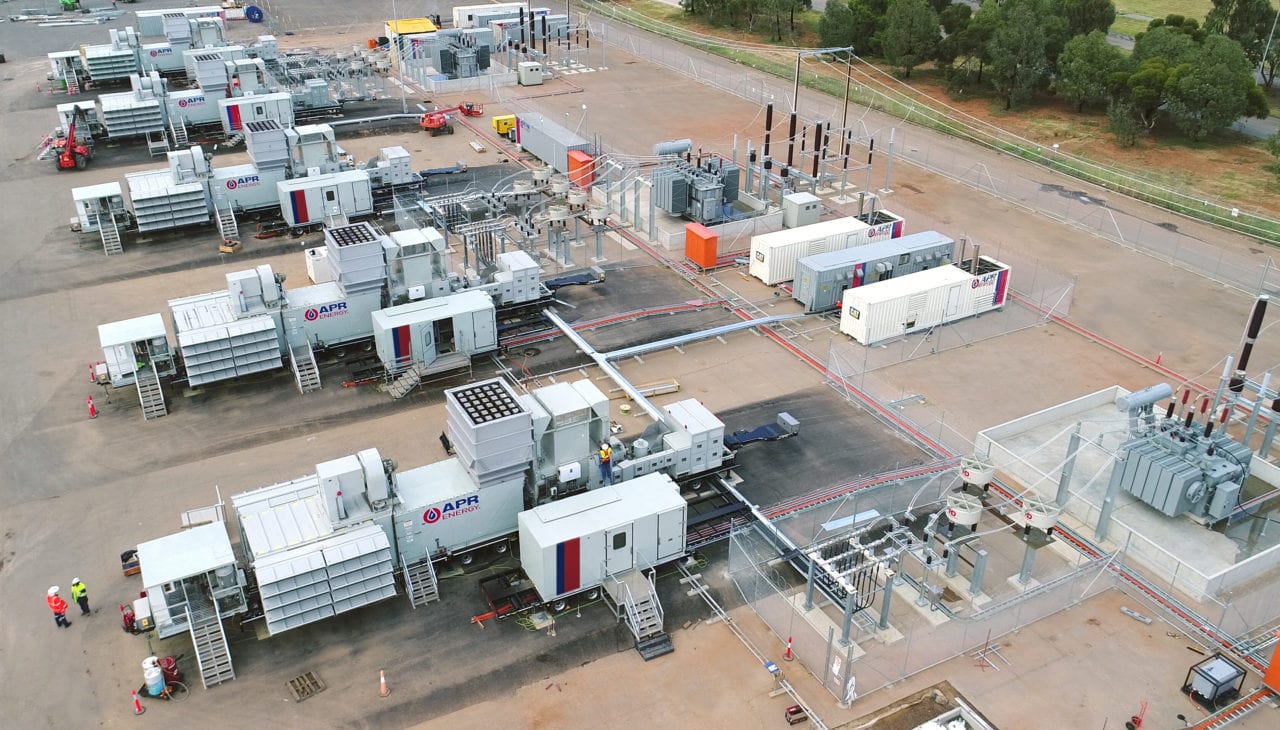Lessons in Backup Power Generation from South Australia
Electricity demand spiked considerably in South Australia this past January as residents tried to stay cool in the middle of a record heat wave that brought temperatures up to 46.6°C (or about 115°F). To ensure a stable power supply would be available, the South Australian government fired up two power plants (276 MW) that the team at APR Energy installed on a fast-track basis in 2017.

The nine GE TM2500 dual-fuel mobile gas turbines with rapid dispatch capability could reach maximum output in just eight minutes, which enabled the grid to reliably and quickly meet heightened demand during the heat wave.
Click here to take a video tour of an APR Energy power generation site in Australia.
The strategy that the South Australian government developed in cooperation with APR Energy, with an emphasis on grid stabilization and fast-track installation to supplement existing peaking generation, should be looked at closely by energy companies around the world as they consider methods to strengthen their grid systems as more renewable energy comes online. For instance, after experiencing supply shortages during the past summer season, the state of Victoria in Australia is predicted to once again experience difficulties this year. Therefore, a similar solution to that employed in South Australia, perhaps fueled on LPG, could fix the issue.
The following are a few of the advantages that attracted South Australia to selecting a dual-fuel turbine-based offering as their solution.
Versatility and Speed
For South Australia, in addition to complementing the existing peaking generation, the plants were designed with balancing capabilities to support an unstable grid caused by the abundance of newly connected intermittent renewables. The right solution would need to provide stabilizing power quickly during periods when wind or solar energy was fluctuating. The GE TM2500 mobile gas turbines that the government selected not only had the capability to ramp up to maximum output in less than 10 minutes, but could also regulate the grid’s voltage and frequency levels.

In addition to short-term, seasonal needs, energy companies should also consider temporary solutions as part of their long-term capacity planning. This will become particularly important as the demand for power increases and aging infrastructure reaches its operational limits, requires outages for major maintenance, or decommissioning altogether. As infrastructure maintenance becomes more critical, grids will need a strategy to compensate for lost capacity. A temporary power solution that can be delivered and installed in months, rather than the years it can take to build a new facility, may be the most realistic option for energy companies that need incremental power generation during infrastructural upgrades or the benefits of the grid stabilizing capabilities on a short-term basis.
Environmental Impact
Energy companies face growing pressure to minimize the environmental impacts of electricity generation, which means backup power solutions need to be as eco-friendly as the grid itself. This was particularly important for South Australia, which has targeted having 75% of its electricity derived from renewable sources by 2025.
For environmentally conscious energy companies, dual-fuel turbines that utilize low emissions technology are a great fit. The model installed in South Australia featured this capability, and as a result, produced up to 90% less nitrogen oxide emissions than a high-speed diesel engine option. An added benefit of the turbines is a 20% reduction in noise compared to typical reciprocating engine technology.
Fuel Flexibility
A third area the South Australian government considered for its project was fuel. The dual-fuel turbines that were ultimately selected could run on diesel or gas such as natural gas, LPG, LNG, CNG, and more. The turbines also offered the benefit of being able to switch quickly and seamlessly between liquid distillate and gas fuels. As fuel markets experience periods of flux, energy companies should ensure their power solutions have the flexibility to run on different fuel types depending on their availability and price.
An Organized Solution for Changing Times
The risk of instability – or even potential load shedding – is rising for grids around the world as energy companies plan for a growing number of coal-fired plants to close in the years ahead. Customized power solutions can be offered to help provide system stability, such as the plants in South Australia, that won’t require major upfront investment. APR Energy is flexible and ready to ensure the power is available as soon as it is needed when is needed.
—Paul Marcroft is the chief commercial officer at APR Energy, a global leader in fast-track power generation. He has more than 25 years of experience in the power generation industry and was one of APR Energy’s original employees. As a senior member of the commercial team, he has been involved with all of the company’s deals since its inception. Prior to joining APR Energy, he spent more than 10 years in the industrial gas turbines division of Alstom, based in the United Kingdom.